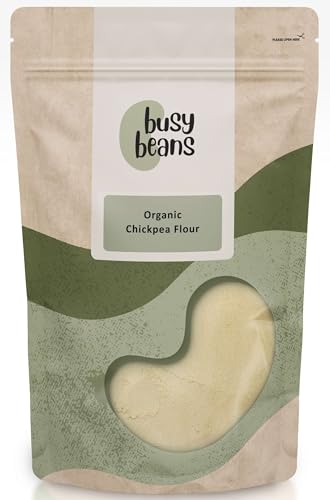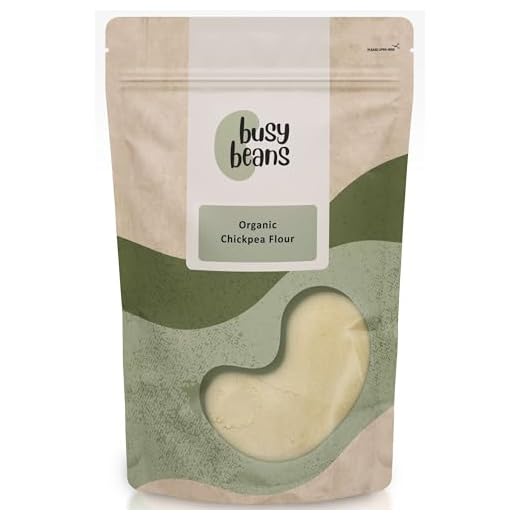




Absolutely! This legume powder can be a delightful addition to your pet’s diet. Rich in protein and fibre, it offers various health benefits that can support your furry friend’s well-being.
When I first introduced this ingredient to my pup’s meals, I was pleasantly surprised by how much he enjoyed it. A small sprinkle mixed with his regular food became a new favourite. Not only did it enhance the flavour, but it also provided him with essential nutrients. However, moderation is key. A little goes a long way, so starting with just a teaspoon is wise to check for any adverse reactions.
Some pets can be sensitive to certain foods, so always monitor their behaviour and digestion after introducing new items. If your companion shows any signs of discomfort, it’s best to consult your vet. In general, though, this legume powder is a nutritious option that most dogs can enjoy without issues.
Is Chickpea Flour Safe for Dogs
Using the legume powder in your pet’s meals can be beneficial, but moderation is key. A small amount may provide protein and fibre, aiding digestion. However, some canines might experience gastrointestinal discomfort if introduced too quickly. Watch for signs of intolerance, such as bloating or gas.
Ensure that any new ingredient, including this type of powder, is incorporated gradually into their diet. If you notice any adverse reactions, consult your vet. Sudden diet changes can lead to digestive issues, as detailed in this article about why does switching dog food cause diarrhea.
Always choose high-quality sources to avoid additives or preservatives that can harm your furry friend. Stick to simple recipes and observe your pet’s response carefully.
Nutritional Benefits of Chickpea Flour for Dogs
This ingredient offers various advantages for canine diets. It is rich in protein, which is crucial for muscle development and overall health. Incorporating it into meals can help maintain a strong physique, especially in active breeds.
The high fibre content assists with digestion, promoting a healthy gut. Many dogs struggle with digestive issues, so adding this ingredient can contribute to smoother bowel movements and overall gut health.
It contains essential vitamins and minerals, including iron, magnesium, and folate. These nutrients support various bodily functions, such as energy production and cellular health, making it a beneficial addition to meals.
Here’s a breakdown of the key nutritional components:
| Nutrient | Benefit |
|---|---|
| Protein | Supports muscle development and maintenance |
| Fibre | Promotes digestive health |
| Iron | Essential for oxygen transport in the blood |
| Magnesium | Supports nerve function and energy production |
| Folate | Contributes to cellular health and function |
Always introduce new ingredients gradually to monitor for any adverse reactions. Consulting with a vet before making significant dietary changes is advisable to ensure it aligns with your pet’s specific needs.
Potential Allergies in Canines: Chickpea Considerations
When introducing new ingredients into a canine’s diet, it’s crucial to monitor for any signs of allergic reactions. Although many pets can tolerate legumes without issue, some may develop sensitivities. Common symptoms include itching, gastrointestinal upset, or unusual behaviour after consuming meals containing this ingredient.
Signs of Allergy
Watch for red, inflamed skin or excessive scratching. Digestive disturbances, such as vomiting or diarrhoea, can also indicate an adverse reaction. If any of these symptoms arise, it’s wise to consult with a veterinarian to discuss dietary changes.
Gradual Introduction
Start with small amounts and observe how your furry friend reacts. This approach allows you to pinpoint any potential issues before they escalate. If you notice any negative effects, discontinue use immediately and seek professional advice. Remember, each canine is unique, and what suits one may not suit another.
How to Introduce Chickpea Flour into Your Dog’s Diet
Start with small amounts to gauge your pet’s response. Mix a teaspoon of the ingredient into their regular meal. Observe for any signs of digestive upset or allergic reactions over the next 24 hours.
If all goes well, gradually increase the quantity. Here’s a simple plan:
- Week 1: Add 1 teaspoon to meals.
- Week 2: Increase to 2 teaspoons.
- Week 3: Move to 1 tablespoon.
- Week 4: Up to 2 tablespoons, if no issues arise.
Mix it well into their kibble or wet food to mask any unfamiliar taste. You can also incorporate it into homemade treats. Here’s a quick recipe:
- 1 cup of the ingredient
- 1/2 cup of mashed bananas or pumpkin
- 1 egg
- 2 tablespoons of peanut butter (ensure it’s free from xylitol)
Combine all ingredients, shape into small balls, and bake at 180°C for about 15-20 minutes. Allow to cool before serving.
Monitor your furry friend during this transition. Changes in behaviour, stool consistency, or overall health should be addressed promptly. If you notice anything unusual, consult your vet.
Incorporating this ingredient can add variety to their diet, but moderation is key. Regularly evaluate how well your pet tolerates it and adjust accordingly. Enjoy the process of discovering new flavours together!
Signs of Digestive Issues in Dogs After Eating Chickpea Flour
Watch out for unusual behaviours in your canine companion after introducing legume-based powder into their diet. Signs of discomfort may include excessive gas, bloating, or a change in appetite. If your pet starts pacing restlessly or seems reluctant to engage in their usual activities, it could indicate digestive distress.
Common Symptoms to Observe
Vomiting or diarrhoea are clear indicators that their system is reacting poorly. Keep an eye on their stool consistency; if it becomes loose or watery, it’s a signal to consult a vet. Additionally, if you notice your furry friend straining during bowel movements, this can suggest gastrointestinal discomfort.
When to Seek Veterinary Advice
If any of these symptoms persist for more than a day or two, it’s wise to reach out to a veterinarian. They can provide tailored advice and possibly recommend dietary adjustments. Always prioritise your pet’s health and well-being by monitoring their reactions to new foods closely.
Recommended Serving Sizes of Chickpea Flour for Dogs
Start with a small amount. For a medium-sized canine, about 1 tablespoon mixed into their food is a good initial portion. Observe how they respond over a few days. If all goes well, you can gradually increase the amount to 2 tablespoons. For smaller breeds, limit it to half a tablespoon, and for larger varieties, you might extend up to 3 tablespoons, depending on their size and dietary needs.
Remember to adjust these portions based on your pet’s overall diet. If their meals are already rich in protein or fibre, consider reducing other ingredients to maintain balance. Always ensure fresh water is available, as any new addition to their diet can increase thirst.
Monitor your furry friend closely after introducing this ingredient. Look for any changes in their stool or energy levels. If you notice any adverse reactions, revert to the previous diet and consult your vet for tailored advice.
Consistency is key. Once a suitable amount is established, stick to it for a while before making further adjustments. Over time, this will help you determine the best serving size that suits your companion’s needs without causing any digestive upset.
Alternatives to Chickpea Flour for Dogs with Sensitivities
If your furry friend experiences sensitivities to certain ingredients, there are several suitable substitutes you can consider that provide similar nutritional benefits without the risk of adverse reactions.
1. Oat Flour
Oat flour is a fantastic option, rich in fibre and beneficial nutrients. It’s gentle on the stomach and can help with digestive health.
- High in soluble fibre, aiding digestion.
- Contains vitamins and minerals such as B vitamins, iron, and magnesium.
- Allergy-friendly for most pets.
2. Brown Rice Flour
Brown rice flour is another excellent alternative. It’s gluten-free and offers a good source of carbohydrates, making it a wonderful energy booster.
- Supports healthy digestion.
- Contains antioxidants that can benefit overall health.
- Easy to digest for pets with sensitive stomachs.
3. Sweet Potato Flour
Sweet potato flour is nutritious and tasty, perfect for adding a hint of sweetness to meals. It’s packed with vitamins and fibre, promoting a healthy gut.
- Rich in vitamins A, C, and B6.
- Provides a natural source of energy.
- Great for dogs needing a boost in nutrients.
4. Coconut Flour
Coconut flour can be a fantastic addition to your pet’s diet. It’s high in fibre and low in carbohydrates, making it a great choice for managing weight.
- Promotes healthy digestion due to its high fibre content.
- Contains healthy fats that can benefit skin and coat health.
- Low glycaemic index, suitable for dogs with dietary restrictions.
When introducing any new ingredient, monitor your pet for any signs of discomfort or allergies. It’s always wise to consult with a veterinarian before making significant changes to their diet.






